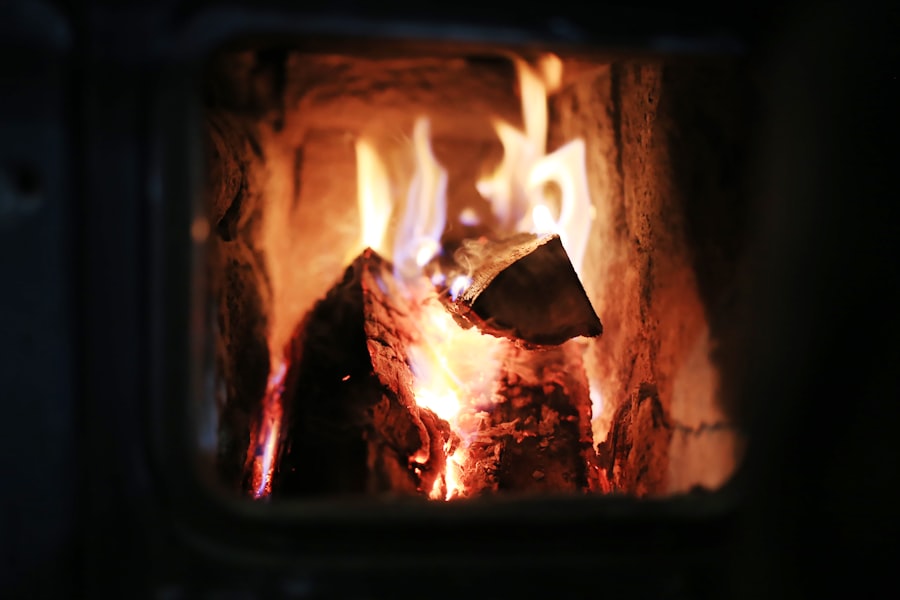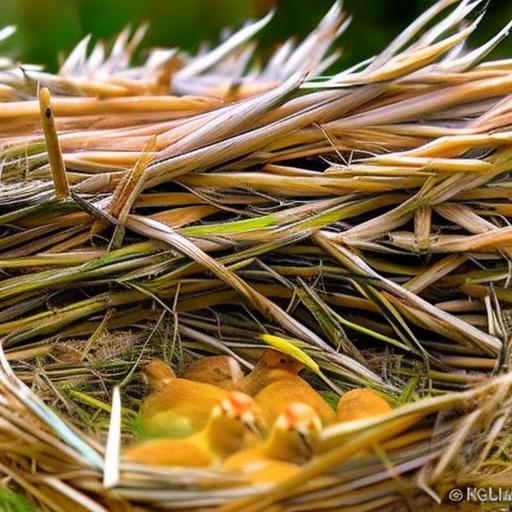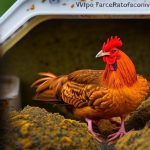Cozy Coops is a company that specializes in providing solutions for keeping chickens warm and comfortable in their coops. When it comes to raising chickens, it is crucial to provide them with a warm and cozy environment, especially during the colder months. This is because chickens are susceptible to cold temperatures and can suffer from frostbite or even die if not properly protected.
There are several ways to keep chickens warm in their coops, including using insulation materials. Insulation helps to regulate the temperature inside the coop, keeping it warm in the winter and cool in the summer. It also helps to maintain the humidity levels, preventing excessive moisture buildup which can lead to respiratory issues for the chickens.
Key Takeaways
- Keeping chickens warm is important for their health and egg production
- Straw is a great insulator for chicken coops, regulating temperature and humidity
- Using straw for coop insulation is cost-effective and environmentally friendly
- Preparing and applying straw properly is key to maintaining a cozy coop
- Straw has health benefits for chickens and their eggs
Understanding the Benefits of Straw for Insulating Chicken Coops
Straw is an excellent choice for insulating chicken coops due to its many benefits. Straw is a natural and renewable resource that is readily available and affordable. It is also an excellent insulator, providing a layer of warmth and protection for the chickens.
There are different types of straw available for coop insulation, including wheat straw, oat straw, and barley straw. Each type has its own benefits, but all are effective at providing insulation. Wheat straw is known for its durability and long-lasting properties, while oat straw is softer and more comfortable for the chickens. Barley straw is also a good option as it has a high insulation value.
How Straw Helps Regulate Temperature and Humidity in Coops
Straw plays a crucial role in regulating temperature and humidity in chicken coops. It acts as a natural insulator, trapping heat inside the coop during cold weather and keeping it cool during hot weather. This helps to maintain a comfortable temperature for the chickens, preventing them from getting too cold or too hot.
Straw also helps to regulate humidity levels in the coop by absorbing excess moisture. Chickens produce a significant amount of moisture through their droppings and respiration, which can lead to high humidity levels. High humidity can cause respiratory issues for the chickens and promote the growth of mold and bacteria. Straw absorbs this moisture, keeping the coop dry and reducing the risk of respiratory problems.
The Cost-Effectiveness of Using Straw for Coop Insulation
| Metrics | Values |
|---|---|
| Cost of Straw | Low |
| Cost of Coop Insulation | High |
| Effectiveness of Straw Insulation | High |
| Energy Savings | Significant |
| Environmental Impact | Positive |
| Installation Difficulty | Low |
Using straw for coop insulation is a cost-effective option compared to other insulation materials. Straw is readily available and affordable, making it a budget-friendly choice for chicken owners. It is also a long-lasting material, meaning that it does not need to be replaced as frequently as other insulation materials.
When comparing the cost of straw to other insulation materials such as foam or fiberglass, straw is significantly cheaper. Foam insulation can be expensive and may require professional installation, adding to the overall cost. Fiberglass insulation is also more expensive than straw and may not be as effective at regulating temperature and humidity in the coop.
The Environmental Benefits of Using Straw for Coop Bedding
Using straw for coop bedding not only provides insulation but also offers several environmental benefits. Straw is a natural and renewable resource that can be sustainably harvested. It is biodegradable and can be composted after use, reducing waste and providing nutrient-rich fertilizer for gardens.
By using straw for coop bedding, chicken owners can reduce their environmental impact and contribute to a more sustainable lifestyle. It is an eco-friendly choice that helps to minimize the use of synthetic materials and chemicals in the coop.
Tips for Preparing and Applying Straw in Chicken Coops

Before applying straw in the chicken coop, it is important to prepare the area properly. Start by cleaning out any old bedding or debris from the coop to ensure a clean environment for the chickens. This will help prevent the buildup of bacteria or pests.
Once the coop is clean, spread a layer of straw on the floor, making sure to cover the entire area. The thickness of the straw layer will depend on the climate and temperature in your area. In colder climates, a thicker layer of straw may be needed to provide adequate insulation.
Best Practices for Maintaining a Cozy Coop with Straw Insulation
To maintain a cozy coop with straw insulation, it is important to clean and replace the straw regularly. Remove any soiled or wet straw and replace it with fresh straw to keep the coop clean and dry. This will help prevent the buildup of bacteria and odors in the coop.
It is also important to regularly check the temperature and humidity levels in the coop to ensure they are within the optimal range for the chickens. This can be done using a thermometer and hygrometer, which are readily available at pet supply stores or online.
How to Monitor and Adjust Coop Temperature with Straw Insulation
Monitoring and adjusting the coop temperature with straw insulation is relatively easy. Start by placing a thermometer inside the coop to monitor the temperature. The ideal temperature for chickens is around 65-75 degrees Fahrenheit.
If the temperature drops below this range, you can add additional layers of straw to provide more insulation. If the temperature rises above this range, you can remove some of the straw or provide additional ventilation to cool down the coop.
The Health Benefits of Straw for Chickens and Their Eggs
Straw offers several health benefits for chickens and their eggs. The insulation provided by straw helps to keep chickens warm during cold weather, reducing the risk of frostbite and other cold-related health issues. It also helps to maintain a comfortable temperature, which is essential for optimal egg production.
Straw bedding also helps to prevent diseases by providing a clean and dry environment for the chickens. It absorbs moisture from droppings, reducing the risk of bacterial growth and respiratory issues. Clean and dry bedding also helps to keep the chickens’ feathers clean, reducing the risk of mites and other pests.
Why Straw is the Ideal Choice for Keeping Cozy Coops and Happy Chickens
In conclusion, straw is the ideal choice for keeping cozy coops and happy chickens. It provides excellent insulation, helping to regulate temperature and humidity in the coop. Straw is also cost-effective, environmentally friendly, and offers several health benefits for chickens and their eggs.
By using straw for coop insulation and bedding, chicken owners can provide a warm and comfortable environment for their chickens while also reducing their environmental impact. It is a natural and renewable resource that is readily available and affordable. So why not give it a try in your own chicken coop and see the difference it can make for your feathered friends?
If you’re interested in keeping chickens warm during the winter, you may also want to check out this article on how to insulate a chicken coop. Insulating your coop can help provide an extra layer of protection against the cold temperatures, ensuring that your chickens stay cozy and comfortable. To learn more about this topic, click here.
FAQs
What is the purpose of straw in chicken coops?
Straw is commonly used as bedding material in chicken coops. It provides insulation, absorbs moisture, and helps to keep the coop clean.
Does straw help keep chickens warm?
Yes, straw can help keep chickens warm by providing insulation. It traps air between the stalks, which helps to retain heat and keep the coop warm.
How much straw should be used in a chicken coop?
The amount of straw needed in a chicken coop depends on the size of the coop and the number of chickens. Generally, a layer of straw about 6 inches deep is recommended.
Is straw the only material that can be used for chicken coop bedding?
No, there are other materials that can be used for chicken coop bedding, such as wood shavings, sawdust, and sand. However, straw is a popular choice because it is affordable and readily available.
How often should straw be changed in a chicken coop?
Straw should be changed in a chicken coop as often as necessary to keep the coop clean and dry. This may vary depending on the number of chickens and the size of the coop, but generally, it is recommended to change the straw every few weeks.
Meet Walter, the feathered-friend fanatic of Florida! Nestled in the sunshine state, Walter struts through life with his feathered companions, clucking his way to happiness. With a coop that’s fancier than a five-star hotel, he’s the Don Juan of the chicken world. When he’s not teaching his hens to do the cha-cha, you’ll find him in a heated debate with his prized rooster, Sir Clucks-a-Lot. Walter’s poultry passion is no yolk; he’s the sunny-side-up guy you never knew you needed in your flock of friends!







